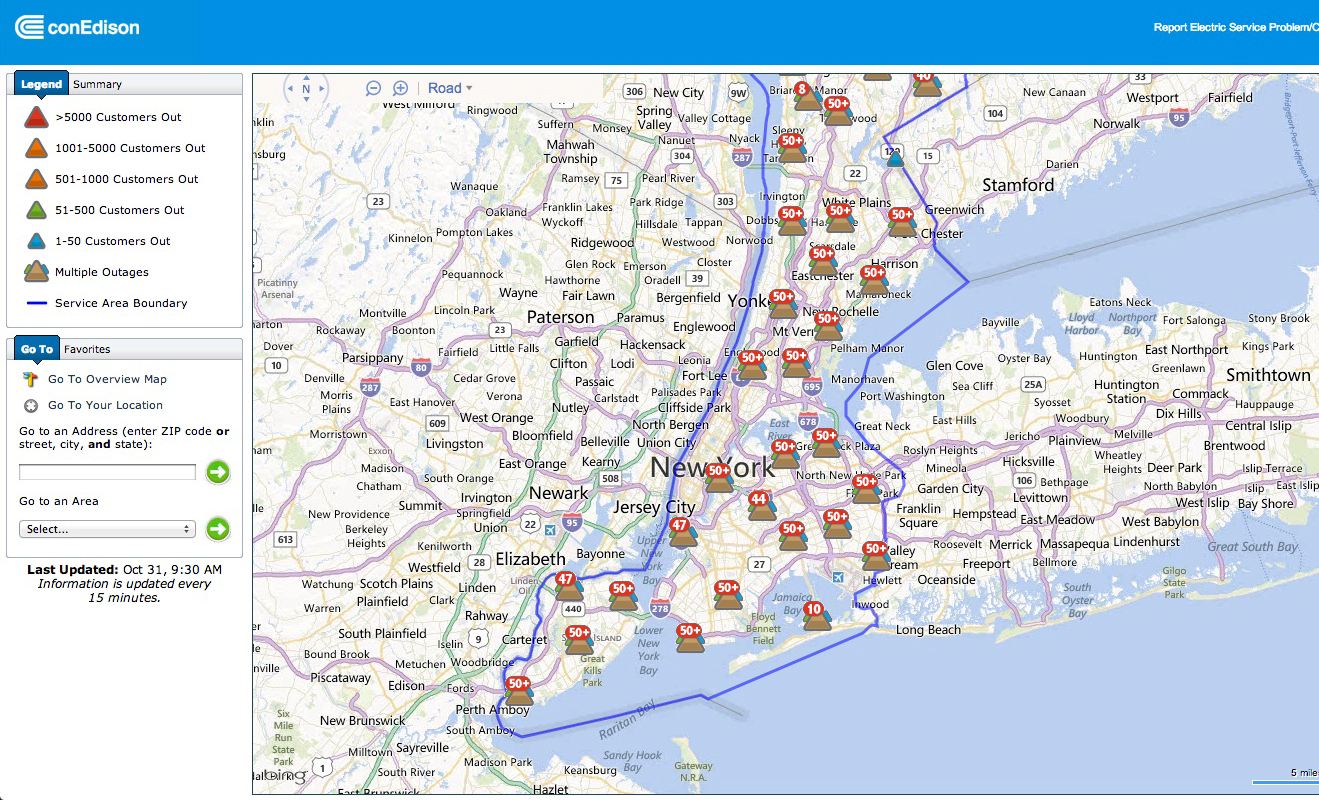Smart Meters Help Utility Speed Sandy Restoration
As power utilities work to restore electricity service to millions of people in the wake of Hurricane Sandy, at least one utility has found its investment in smart meters is making a difference.

Pepco, which serves Washington D.C. and parts of Maryland, is using these two-way meters to automatically locate where power outages on its network occurred. Once power is restored, the utility can also ping meters to verify service, rather than send out a crew or make a phone call, according to a Pepco representative.
The widespread disruption to electricity and natural gas service from Sandy raises questions over whether smart grid technologies, such as two-way meters and advanced switches to automatically reroute power, could make the grid more resilient.
Cutting back trees near power lines is considered one of the best preventative measures. And with more than eight million people without power at the peak, communication technologies are proving vital. A number of affected utilities allow consumers to log on to check the status of power outages on Web-based maps and get up-to-the-minute updates on Twitter or Facebook.
But automation can speed up restoration. In the case of Pepco, its meters automatically send a “no power” report to its outage management system, which is quicker than having a person call in and overcomes any possible language barriers. Checking restored service from central officers via meters also saves time and personnel.
The utility, which has about 425,000 activated smart meters, had more 100,00 people suffer from power outages and 40,000 at its worst. The company projected that 95 percent of its affected customers were back online as of this morning. Pepco, which found that the automated meters sped up restoration following Hurricane Irene last year, is gathering data on how much they improve its efficiency, a representative said.
One of the complaints of smart meters is that consumers see few benefits yet ultimately need to pay for the equipment upgrades. In the case of better grid reliability, it seems the case for smart meters and other automation technology has been undersold.
Keep Reading
Most Popular
Large language models can do jaw-dropping things. But nobody knows exactly why.
And that's a problem. Figuring it out is one of the biggest scientific puzzles of our time and a crucial step towards controlling more powerful future models.
The problem with plug-in hybrids? Their drivers.
Plug-in hybrids are often sold as a transition to EVs, but new data from Europe shows we’re still underestimating the emissions they produce.
Google DeepMind’s new generative model makes Super Mario–like games from scratch
Genie learns how to control games by watching hours and hours of video. It could help train next-gen robots too.
How scientists traced a mysterious covid case back to six toilets
When wastewater surveillance turns into a hunt for a single infected individual, the ethics get tricky.
Stay connected
Get the latest updates from
MIT Technology Review
Discover special offers, top stories, upcoming events, and more.